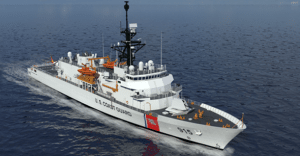
The Coast Guard is reviewing requirements to outfit its eventual fleet of new medium-endurance cutters with secure capabilities for collecting, processing and disseminating intelligence, a senior service official said on Tuesday. The cost to install a Sensitive Compartmented Information Facility (SCIF) is about $25 million per Offshore Patrol Cutter (OPC), Vice Adm. Daniel Abel, deputy commandant for Operations, told a House panel in response to a question from Rep. Sean Patrick Maloney (D-N.Y.), chairman of the House Transportation and Infrastructure…

 By
By 











